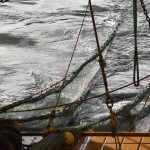Holly Binns, manager of the Pew Environment Group’s Campaign to End Overfishing in the Southeast, said in a statement that the plan puts South Atlantic red snapper on the right track for recovery, and it is long overdue. This iconic species has been fished at unsustainable rates for decades, and this decisive action is required now to save it.
He informed that the study is going on to learn the new red snapper population, and the South Atlantic Fishery Management Council could adjust the recovery plan based on the findings at its December meeting in North Carolina. The good news is that according to initial findings from the current study, additional information supplied by fishermen shows that fewer red snapper may be caught and killed accidentally when other deep-dwelling species are targeted.
Under the plan, the red snapper population could boom in less than 10 years, resulting in more robust fishing than exists today. The amendment, initially approved in June by the South Atlantic Fishery Management Council, halts red snapper fishing in federal waters from North Carolina to Florida until the critically depleted species begins to rebound.








